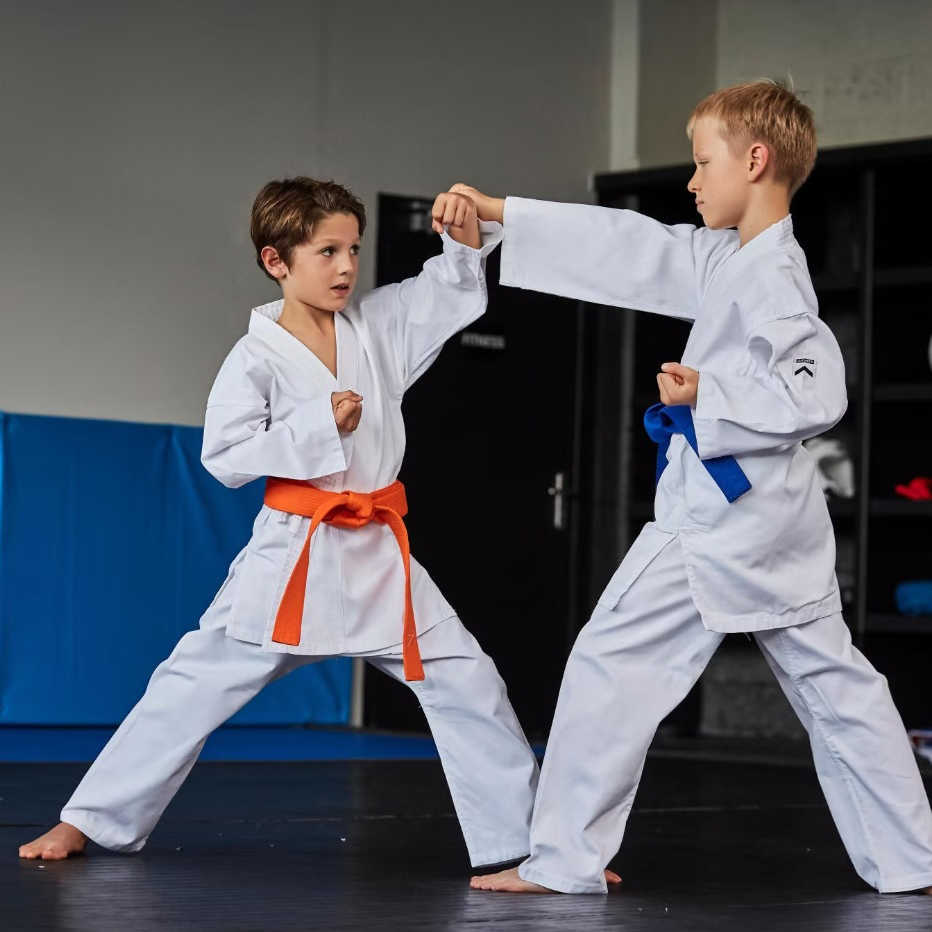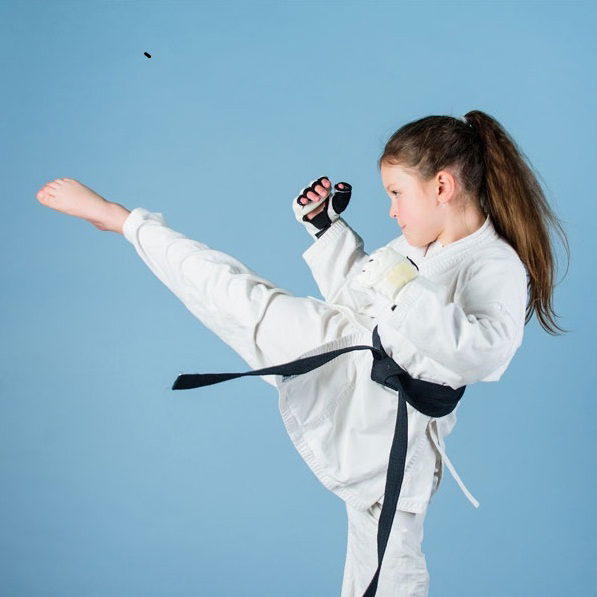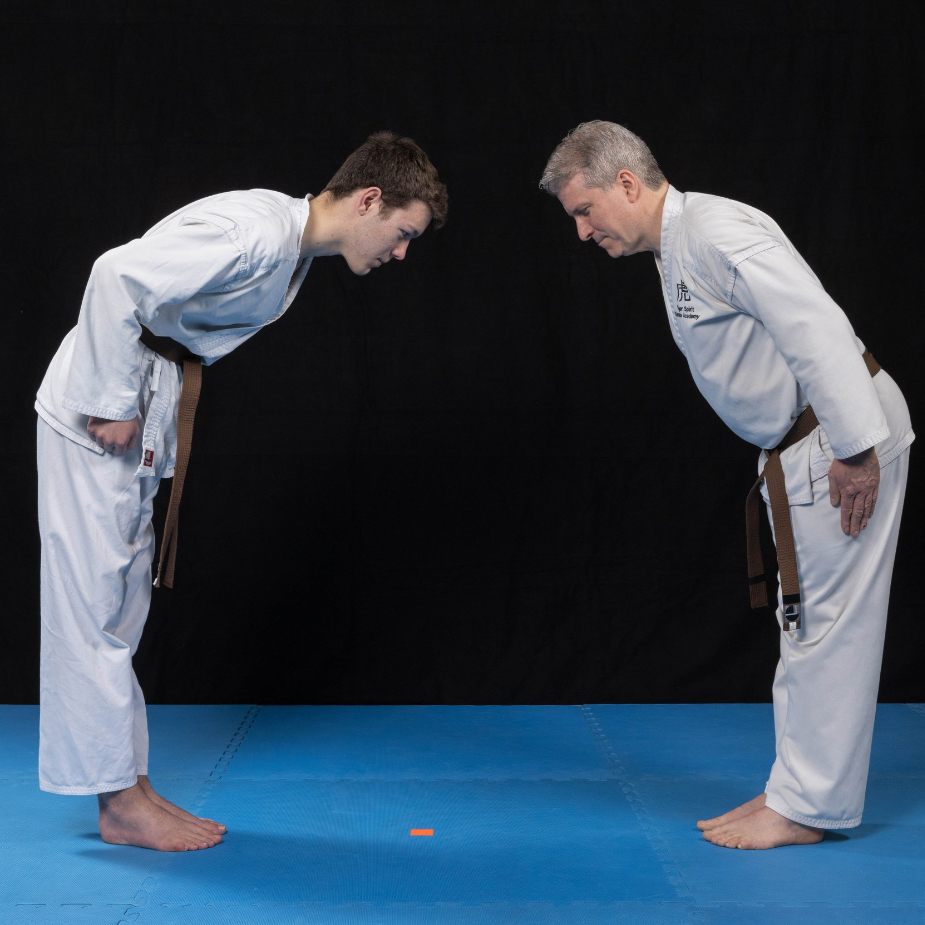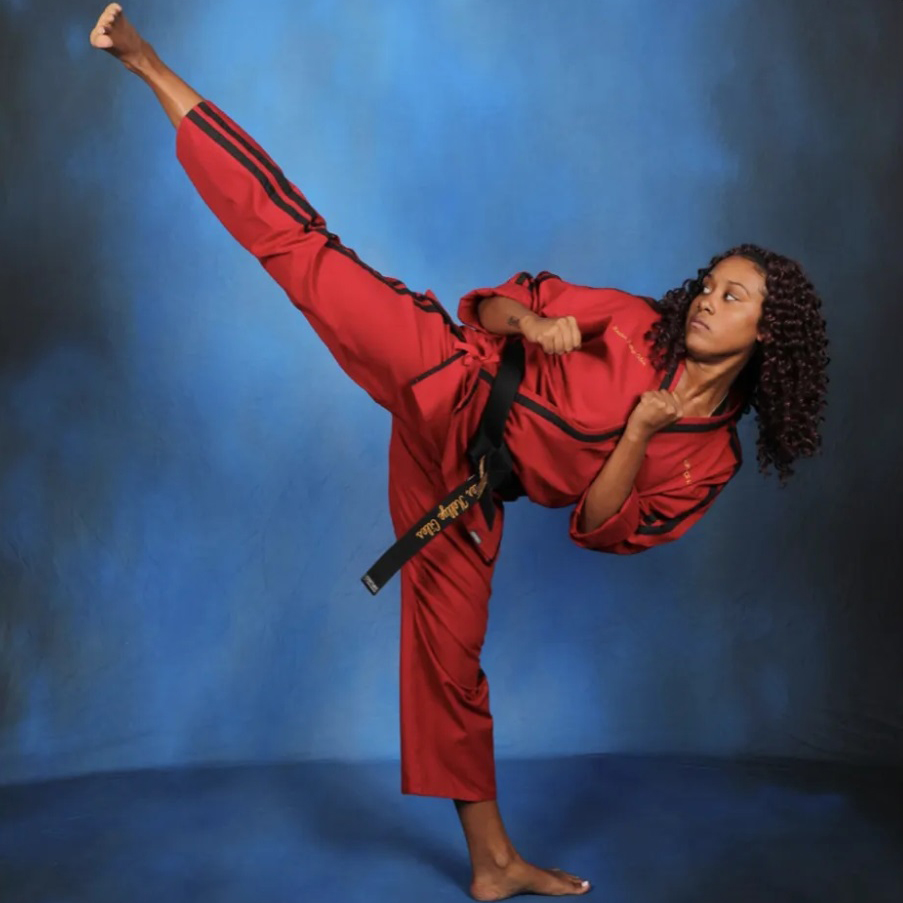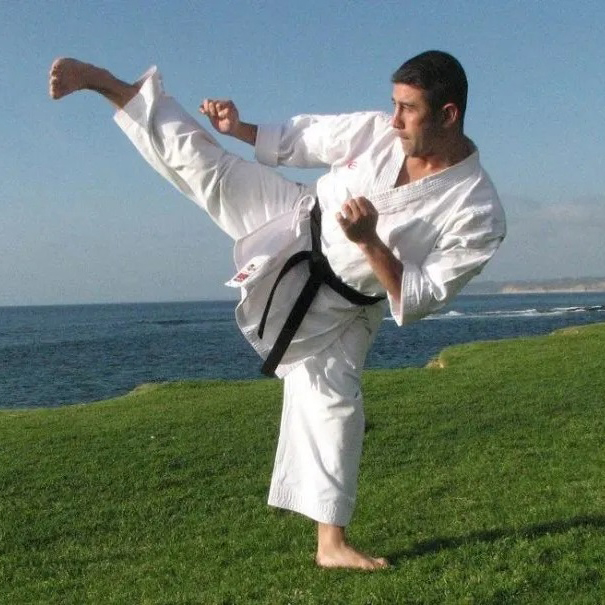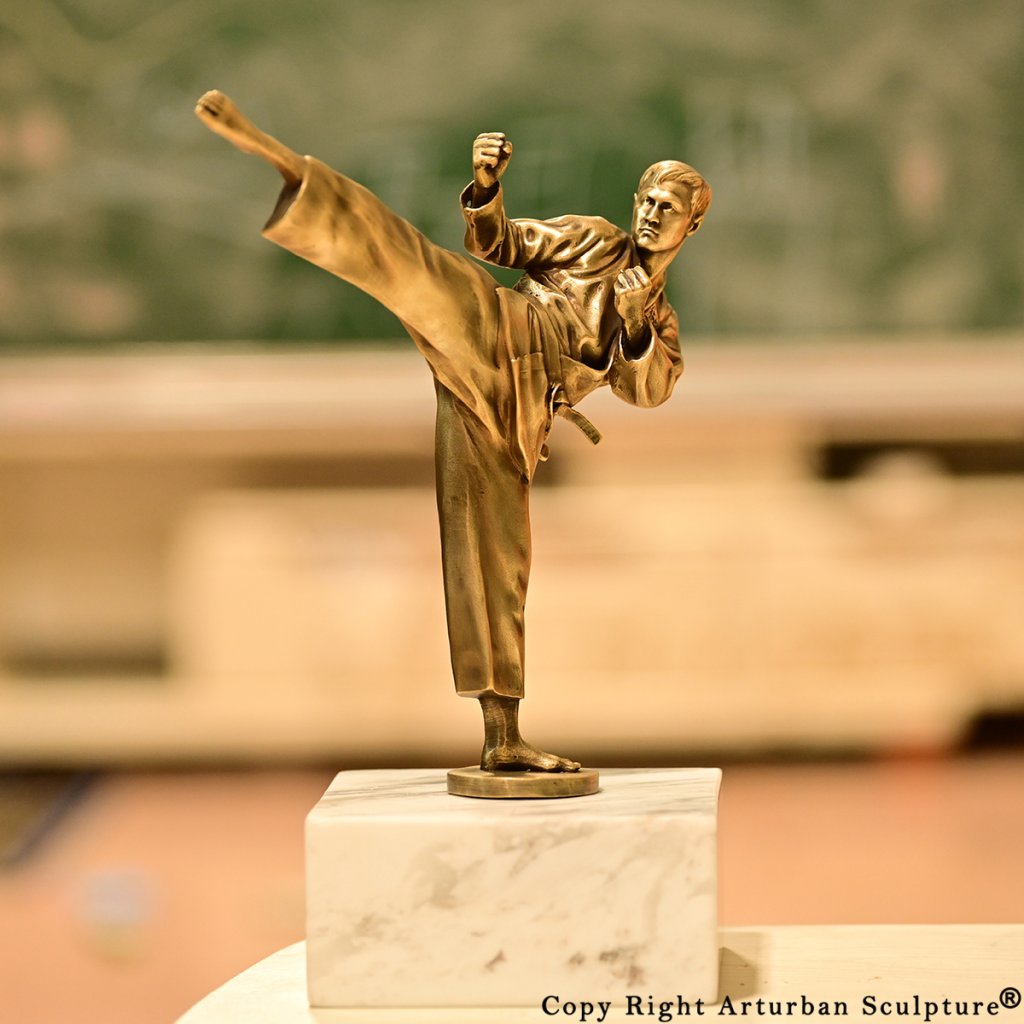Karate statue symbolizes the power and spiritual core of martial arts. It is not only an artistic expression, but also a heritage and tribute to karate culture and philosophy. Through the precise depiction of movements, the sculptures demonstrate the core values of karate, such as concentration, self-discipline, balance, and inner and outer cultivation. Karate Statue reminds people that karate is not only a technique, but also a way to cultivate one’s character, conveying the concepts of “stopping war with martial arts” and “cultivating the mind with martial arts”. This type of sculpture is of great significance in spreading martial arts culture, inspiring practitioners, and promoting the spirit of martial arts. It is also a medium to show the aesthetics and spiritual height of martial arts to the public.
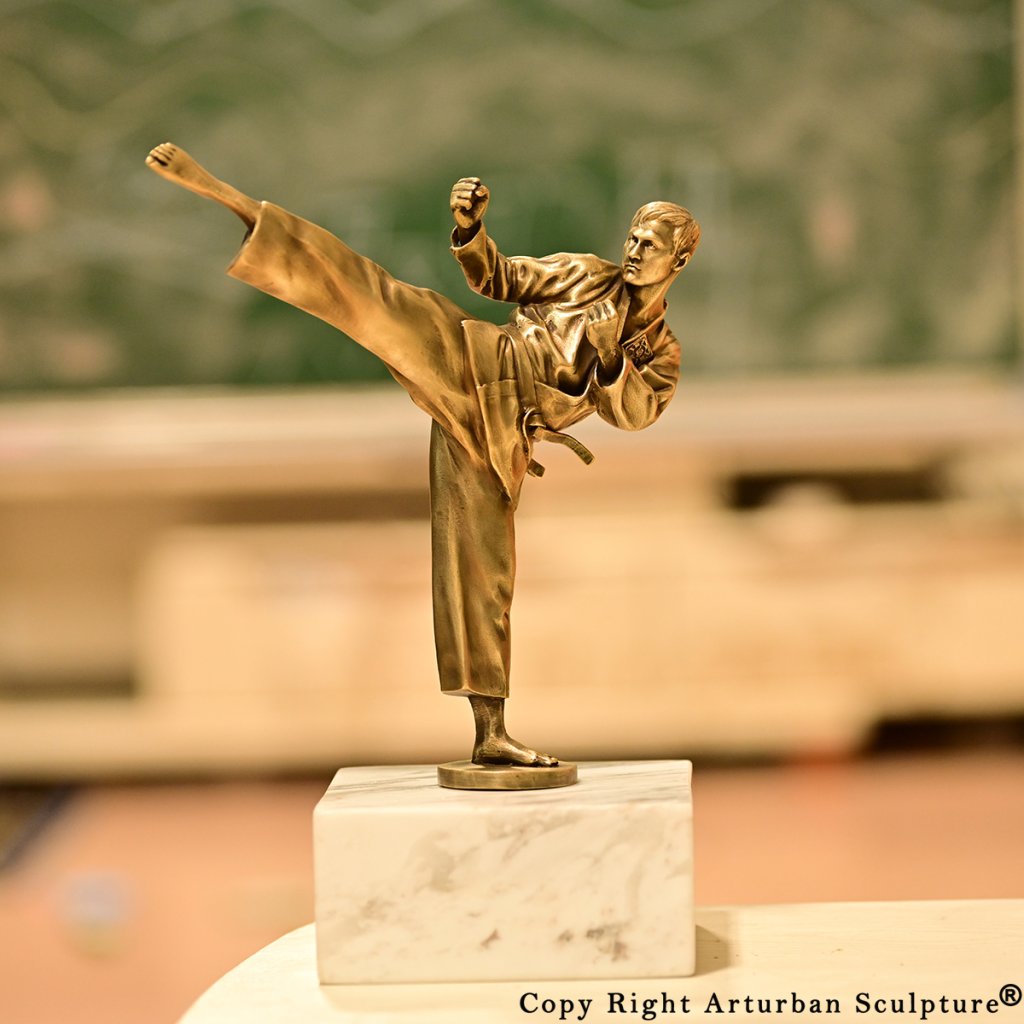
- What is karate and its benefits?
- The Spirit of Karate.
- What is Yoko Geri Keage?
- Description of this Karate Figurine.
- What is the significance of this Karate Statue?
- The production process of making Karate Statue.
- Advantages of using bronze material to make this sculpture.
- How much does the Karate Statue cost?
1. What is karate and its benefits?
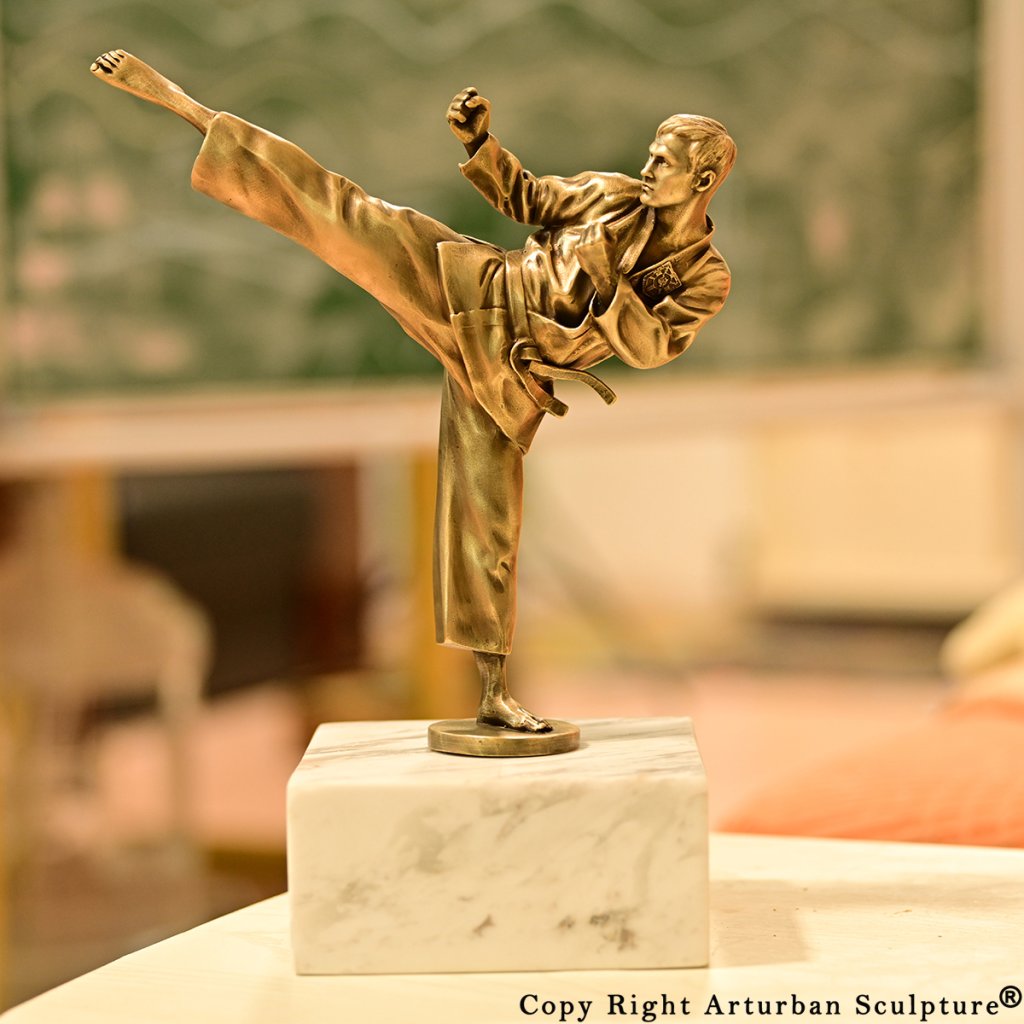
Karate is a martial art that originated in Okinawa, Japan. It combines the characteristics of local Okinawa martial arts and Chinese martial arts. It is mainly based on unarmed techniques, including boxing, kicking, elbow strikes, defense and other actions.
Benefit:
Enhance physical fitness: Improve strength, speed, flexibility and balance.
Spiritual Practice: Cultivate concentration, self-discipline, perseverance and self-confidence.
Improve self-defense skills: Learn practical self-defense skills.
Cultural Heritage: Understand the Japanese martial arts spirit, such as etiquette and respect.
Release Stress: Improve mental health through training.
2. The Spirit of Karate.
The spirit of Karate is not limited to the martial arts technique itself, but also a life attitude and philosophy. This spirit is reflected in the following core elements:
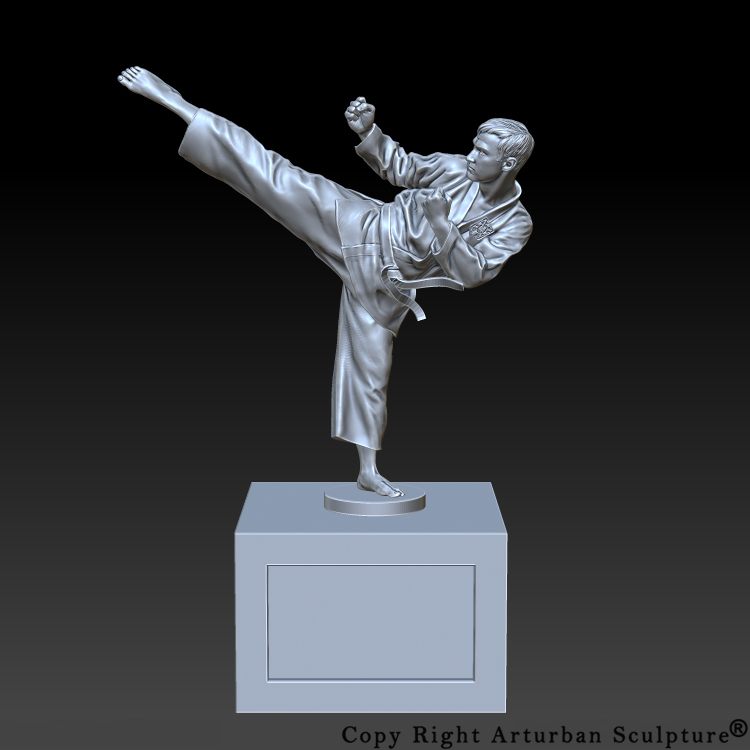
- 1. Etiquette (Rei):
Karate begins and ends with “Li”, emphasizing respect for others and awe of martial arts.
For example, in training and competition, practitioners express respect by bowing.
- 2. Effort (Doryoku):
- Emphasizing continuous efforts and diligent training, pursuing the perfection of skills and the sublimation of spirit.
- “Today is better than yesterday” is the belief of many karate practitioners.
- 3. Self-discipline (Jinkaku Kansei):
- Self-discipline and self-control are the core of the spirit of karate, requiring practitioners to overcome their inner fears and desires through training.
- Practicing karate is not only about defeating opponents, but also about defeating oneself.
- 4. Patient (Nin):
- Karate training requires enduring physical and mental pressure and cultivating perseverance.
- In actual combat, calmness and patience are also required to wait for the right opportunity.
- 5. Mushin:
- The concept of “no self” in Zen Buddhism is reflected in karate as the practitioner is not disturbed by emotions in actual combat, has no distractions, and focuses on every movement.
- 6. Defense and Peace:
- Karate advocates “stopping war with martial arts”, that is, protecting oneself and others through martial arts techniques, rather than actively attacking.
- Classic quote: “Karate is not the art of attack, but the art of defense.”
- 7. Lifelong learning (Kaizen):
- Karate is a lifelong practice path, there is no end, only continuous progress.
3. What is Yoko Geri Keage?
Yoko Geri Keage (lateral kick up) is a rising side kick in karate.
- 1. Action Features:
- Lift your knees and whip your legs upwards or sideways to kick the target quickly.
- The main striking part is the opponent’s head or side, using the instep or sole of the foot as the striking point.
- 2. Technical Requirements:
- Movements are fast and smooth, focusing on speed and flexibility.
- You need to quickly retract your kick after kicking to avoid exposing defensive holes.
- 3. Main uses:
- Used during matches to score points or disrupt opponents.
- Commonly used for long-range or high-position attacks.
4. Description of this Karate Figurine.

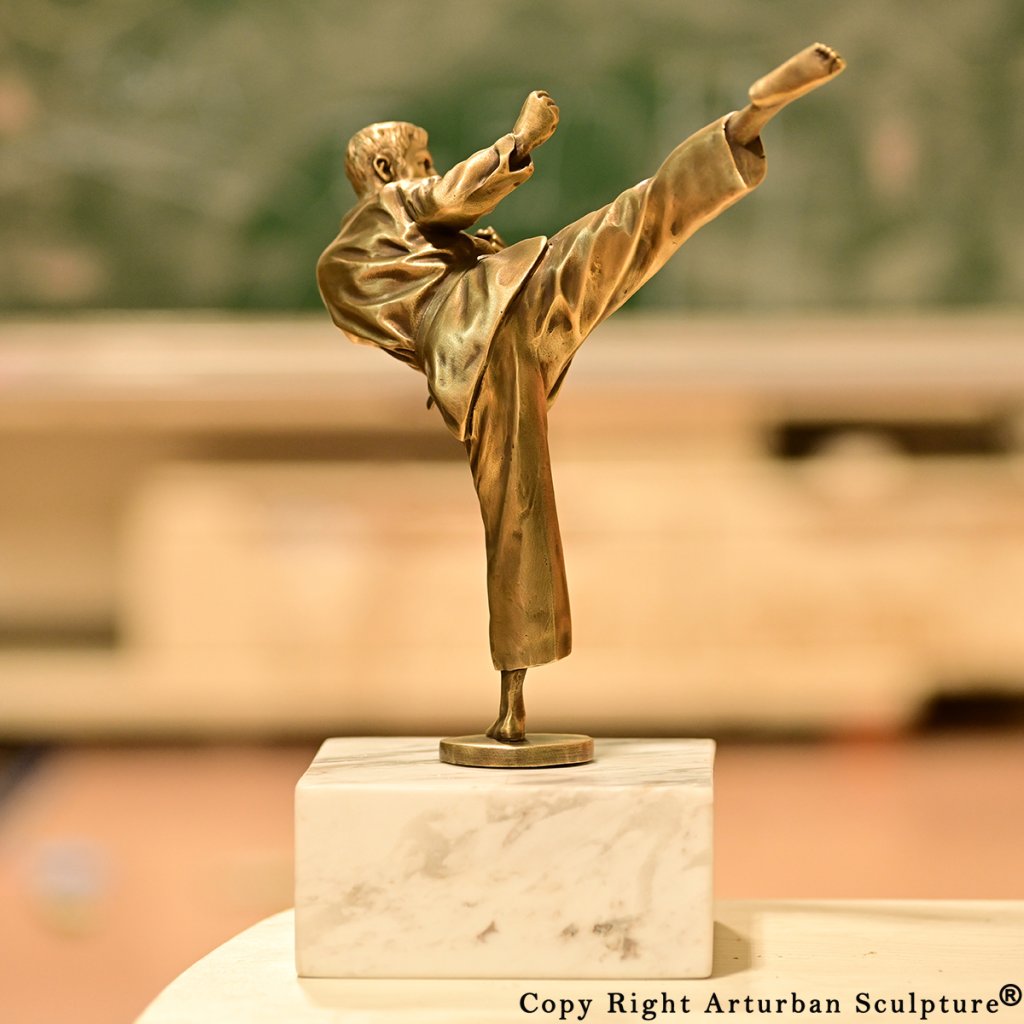
This bronze sculpture of a karate warrior performs a classic high side kick (Yoko Geri). The Karate Statue is beautifully detailed, with a traditional karate uniform and a belt tied around the waist, symbolizing the warrior’s identity. The warrior’s movements are full of tension, with his right leg kicked high, his supporting leg stable, and his fists clenched, perfectly showing the balance of power and control in karate. The bronze material gives the sculpture a smooth line sense and metallic sheen, enhancing its artistic expression. The base of the sculpture is made of marble, which contrasts with the bronze body and enhances the overall stability and elegance.
5. What is the significance of this Karate Statue?
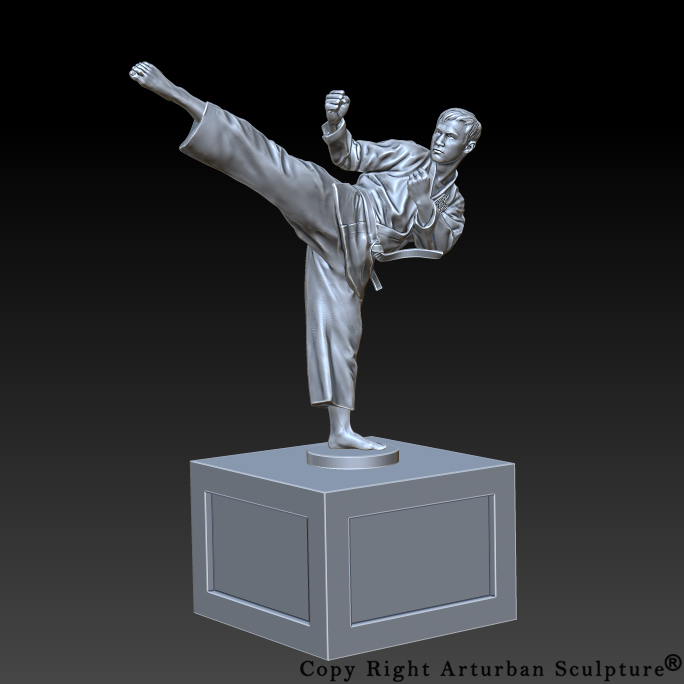
This Karate Sculpture symbolizes the core spirit of karate, including strength, concentration, self-discipline and balance. Through the action of high side kick, the Karate Statue shows karate’s pursuit of technology and art, and at the same time reflects the praise of the warrior’s perseverance and concentration. This is not only a work of art, but also a heritage and tribute to karate culture and philosophy, inspiring people to constantly pursue excellence and showing the profound meaning of “cultivating oneself through martial arts”.
6. The production process of making Karate Statue.
Below are pictures of the making process of the Karate Sculpture. You can understand the making process simply and clearly.
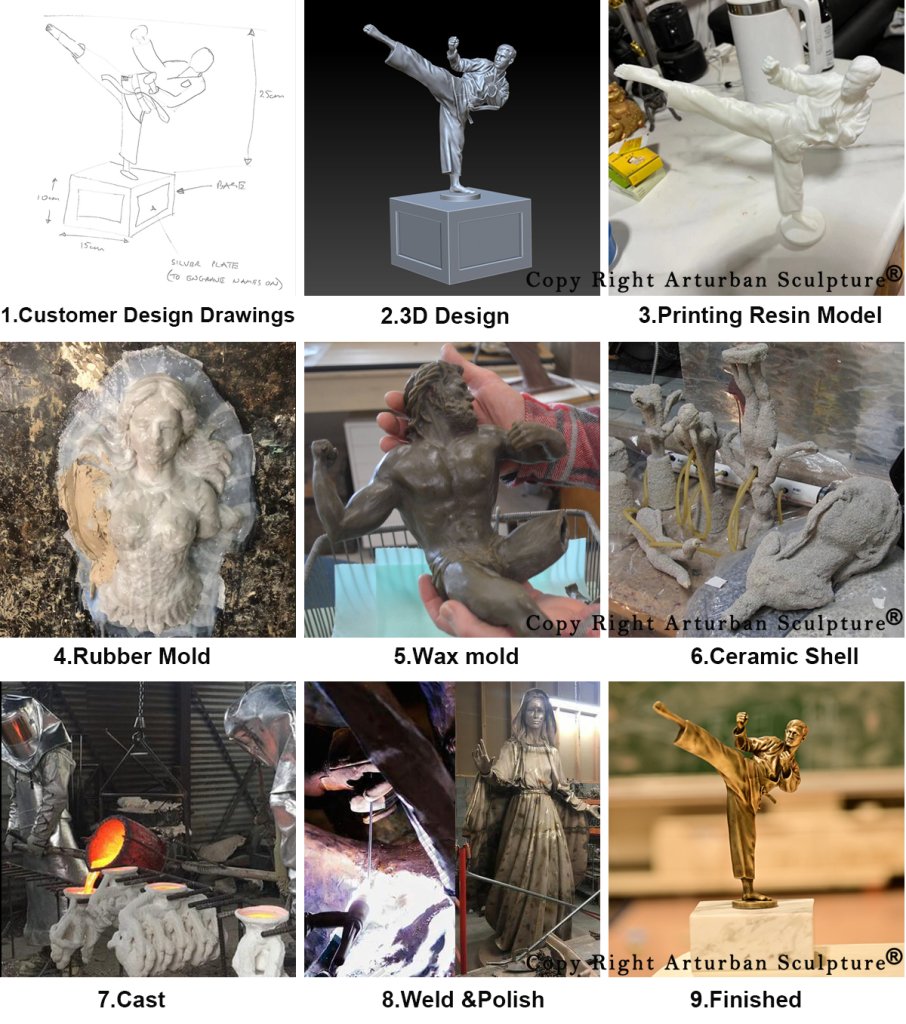
7. Advantages of using bronze material to make this sculpture.
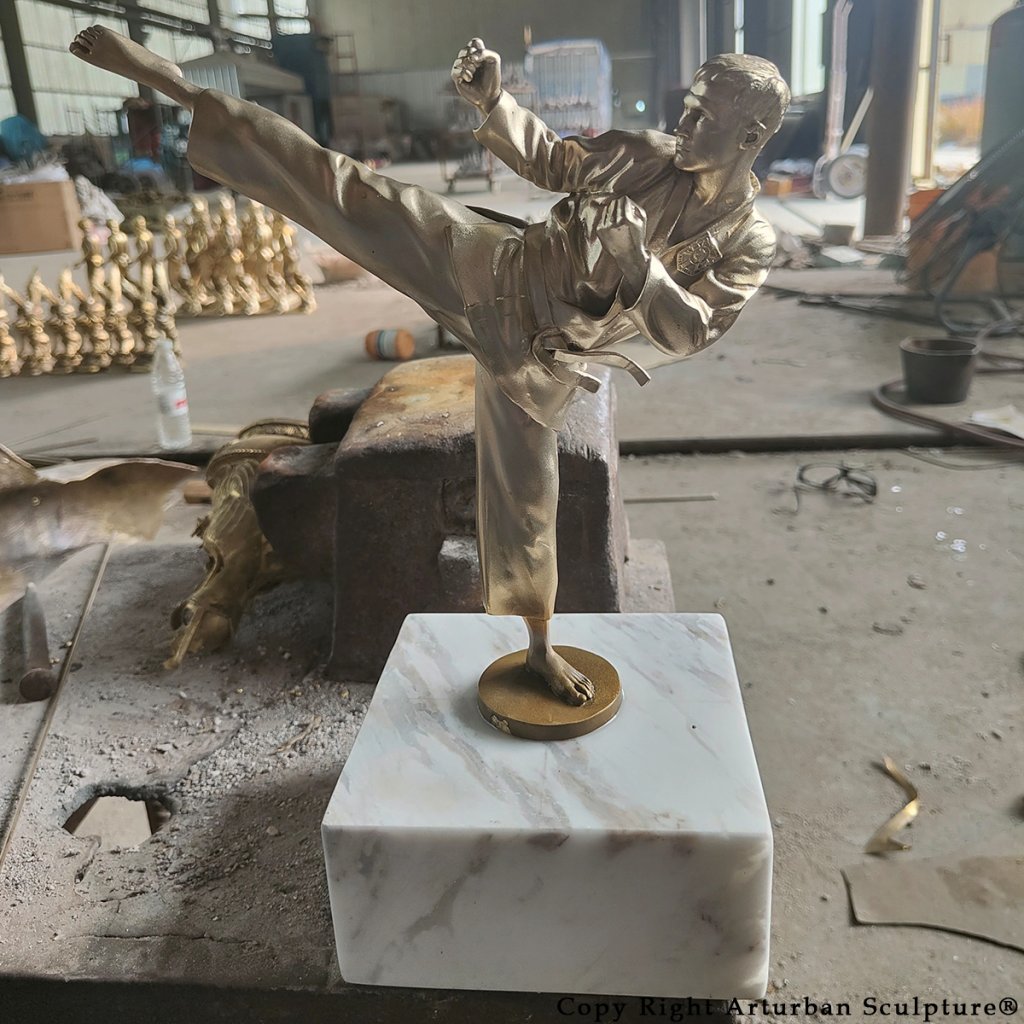
1. Durability: Bronze has strong corrosion resistance and oxidation resistance, suitable for long-term preservation, and can maintain good condition in both indoor and outdoor environments.
2. Details: Bronze can show the fine movements of the characters and the folds of the uniform, perfectly restoring the dynamic beauty of the high side kick.
3. Artistic texture: The metallic luster of bronze adds a sense of nobility to the sculpture, showing the fusion of strength and elegance, which is in line with the spirit of karate.
4. Weight stability: Bronze has a high density, which makes the sculpture have a good balance and is more stable with a marble base.
5. Strong plasticity: Bronze is easy to shape during the casting process, and can accurately depict complex movements and character expressions, increasing the artistic value of the sculpture.
8. How much does the Karate Statue cost?
The price of a Karate sculpture varies depending on many factors, including the size of the statue, the material,etc. Small Karate Figurine (such as desktop decorations) are usually made of materials such as copper and cost between $80-$800. for the life size Karate statue, such as outdoor statues made of bronze, stainless steel, fiberglass or marble, cost around $900-$4000. You can contact us and send us your requirement at any time, we can send you free quotation.
Send us your requirements now, we will reply to your email within 24 hours

